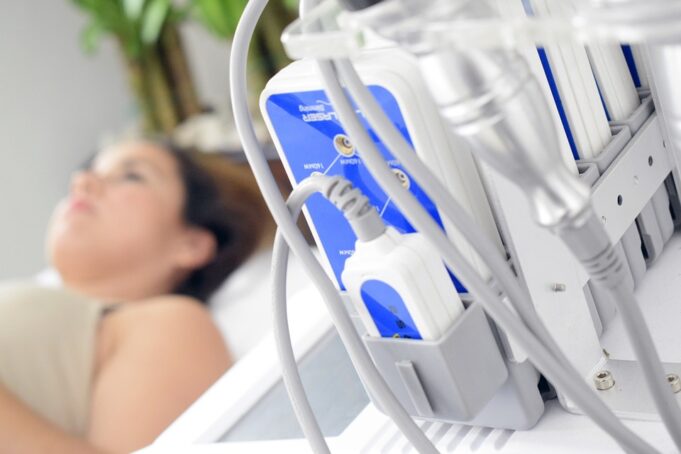Advancements in Imaging Technology for Assessing Bone Health and Degeneration
As humans age, our bones become weaker and more prone to fractures. This is especially true for women after menopause due to decreased estrogen levels. However, advances in imaging technology have made it easier to assess bone health and identify potential problems before they lead to serious injury.
Dual-energy X-ray absorptiometry (DXA) has been the gold standard for measuring bone mineral density (BMD) since its introduction in the 1980s. DXA scans are quick, noninvasive, and expose patients to minimal radiation. They provide accurate measurements of BMD at the hip and spine, which are common sites of osteoporotic fractures.
However, DXA scans only give a snapshot of BMD at one point in time. They do not show changes over time or provide information about bone quality or microarchitecture. This is where newer imaging technologies come into play.
High-resolution peripheral quantitative computed tomography (HR-pQCT) uses X-rays to create three-dimensional images of small bone segments like the wrist or ankle with high resolution down to 82 microns per voxel (3D pixel). These images can be used to measure cortical thickness, trabecular number and separation as well as other structural parameters that correlate with fracture risk [1]. HR-pQCT also allows researchers to study changes in bone structure over time.
Magnetic resonance imaging (MRI) is another noninvasive technique that can be used for assessing bone health without exposing patients to ionizing radiation [2]. MRI provides excellent soft-tissue contrast which makes it particularly useful for identifying stress fractures early on when they may still be invisible on plain radiographs [3].
Ultrasound-based techniques have also emerged as promising tools for evaluating skeletal health [4]. Quantitative ultrasound measures sound waves transmitted through bones using a handheld device placed on the skin surface above bony structures such as the heel or wrist. These measurements can be used to estimate BMD and predict fracture risk.
In addition to these imaging technologies, researchers are also exploring new biomarkers that could provide early warning signs of bone degeneration [5]. One such biomarker is sclerostin, a protein produced by osteocytes (bone cells) that inhibits bone formation. Elevated levels of sclerostin have been associated with increased fracture risk in postmenopausal women [6]. Other potential biomarkers include markers of inflammation and oxidative stress.
Despite these advancements, there is still much work to be done in the field of bone health assessment. For example, HR-pQCT scans are not yet widely available and can be costly compared to DXA scans. MRI may also have limitations when it comes to assessing cortical bone thickness due to signal drop-off at tissue interfaces [7]. Additionally, more research is needed on how best to use ultrasound-based techniques for predicting fracture risk.
Looking ahead, researchers are already working on developing even more advanced imaging technologies for assessing bone health and degeneration. One promising approach involves using positron emission tomography (PET) scanning combined with CT or MRI [8]. PET allows for visualization of metabolic activity within bones which could help identify areas where active remodeling is taking place – an important factor in maintaining healthy bones.
Another area of research involves using artificial intelligence (AI) algorithms to analyze medical images and extract meaningful information about skeletal health [9]. AI has shown promise in other medical fields like radiology where it can assist with image interpretation and diagnosis.
Advancements in imaging technology have revolutionized our ability to assess bone health and identify potential problems before they lead to serious injury. As we continue down this path, we will undoubtedly see even more exciting developments emerge that will further improve our understanding of skeletal health.
References:
[1] Burghardt AJ et al., “Quantitative Assessment of Bone Microarchitecture with HR-pQCT”, Bone. 2013; 58(2): 182-194.
[2] Link TM et al., “Imaging of Osteoporosis: Overview and Clinical Applications”, Radiology. 2016; 280(2): 313-329.
[3] Kijowski R et al., “MRI Findings of Stress Injuries to the Pelvis and Lower Extremities in Athletes”, AJR Am J Roentgenol. 2007;188(3):W352-W358.
[4] Hans D et al., “Ultrasound Assessment of Fracture Risk in Metabolic Bone Disease: A Review of the Current State of the Art”, Eur J Endocrinol. 2004;151(1):15-25.
[5] Khosla S, Shane E, “A Crisis in the Treatment of Osteoporosis”, J Bone Miner Res.2016;31(8):1485-1487.
[6] Ardawi MS et al., “Increased Serum Sclerostin Levels in Patients with Established Osteoporosis: Comparison with Healthy Subjects and Patients with Active Paget’s Disease of Bone”. Annals Saudi Med.2011 Jul-Aug;31(4):399–407
[7] Wehrli FW et al., “High-resolution MRI detects trabecular microstructure differences between osteopenic postmenopausal women and normal controls”. Journal Of Magnetic Resonance Imaging : JMRI [serial online]. May/June2001;(3).
[8] Lang T et al., “Bone imaging using positron emission tomography”, Physics In Medicine And Biology [serial online]. June2020;(11).
[9] Wang YXJ, “Artificial intelligence is coming to musculoskeletal radiology”, Skeletal Radiology (2019) 48:1641–1643.
*Note: this site does not provide medical opinions or diagnosis and should not be relied upon instead of receiving medical attention from a licensed medical professional.




